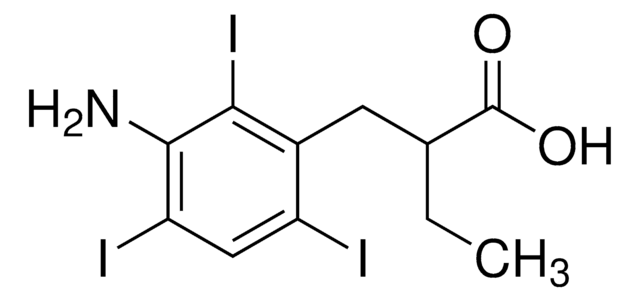E8283
pFLAG-CTS™ Expression Vector
Bacterial vector for periplasmic expression of C-terminal FLAG fusion proteins
Sign Into View Organizational & Contract Pricing
All Photos(2)
About This Item
UNSPSC Code:
12352200
Recommended Products
tag
FLAG® tagged
grade
for molecular biology
form
buffered aqueous solution
shipped in
dry ice
storage temp.
−20°C
General description
The pFLAG-CTS™ Expression Vector is a 5.3 kb E. coli expression vector used for cytoplasmic expression of a properly inserted open reading frame as a C-terminal FLAG® fusion protein. The FLAG epitope is a small, hydrophilic 8 amino acid tag (DYKDDDDK) that provides for sensitive detection and high quality purification using ANTI-FLAG products.
C-terminal FLAG fusion proteins may be purified using Monoclonal ANTI-FLAG M2, Catalog Number F3165, and ANTI-FLAG M2 Affinity Gel, Catalog Number A2220.
The pFLAG-CTS-BAP Control Plasmid is a 6.7 kb E. coli plasmid used for efficient and controlled periplasmic expression of C-terminal FLAG-BAP fusion protein.
Vector Maps and Sequences
C-terminal FLAG fusion proteins may be purified using Monoclonal ANTI-FLAG M2, Catalog Number F3165, and ANTI-FLAG M2 Affinity Gel, Catalog Number A2220.
The pFLAG-CTS-BAP Control Plasmid is a 6.7 kb E. coli plasmid used for efficient and controlled periplasmic expression of C-terminal FLAG-BAP fusion protein.
Vector Maps and Sequences
Application
The pFLAG-CTS™ Expression Vector is suitable for cloning and expression of C-terminal FLAG® fusion proteins in E. coli.
Components
- pFLAG-CTS™ Expression Vector 10 μg (E5269) is supplied as 0.5 mg/ml in 10 mM Tris-HCl (pH 8.0) with 1 mM EDTA.
- pFLAG-CTS™-BAP Control Plasmid 1 μg (P7707) is supplied as 0.5 mg/ml in 10 mM Tris-HCl (pH 8.0) with 1 mM EDTA.
Principle
The promoter-regulatory region of the strong tac promoter (a hybrid of the trp and lac promoters from E.coli) drives transcription of ORF-FLAG fusion constructs. Control of transcription is regulated by the presence of the lacO sequences and inclusion of the lac repressor gene (lacI) on the plasmid.
Legal Information
FLAG is a registered trademark of Merck KGaA, Darmstadt, Germany
pFLAG-CTC is a trademark of Sigma-Aldrich Co. LLC
pFLAG-CTS is a trademark of Sigma-Aldrich Co. LLC
Storage Class Code
12 - Non Combustible Liquids
WGK
WGK 3
Flash Point(F)
Not applicable
Flash Point(C)
Not applicable
Personal Protective Equipment
dust mask type N95 (US), Eyeshields, Gloves
Certificates of Analysis (COA)
Search for Certificates of Analysis (COA) by entering the products Lot/Batch Number. Lot and Batch Numbers can be found on a product’s label following the words ‘Lot’ or ‘Batch’.
Already Own This Product?
Find documentation for the products that you have recently purchased in the Document Library.
G A Smith et al.
Molecular microbiology, 17(5), 945-951 (1995-09-01)
Listeria monocytogenes is a Gram-positive facultative intracytoplasmic bacterial pathogen that exhibits rapid actin-based motility in eukaryotic cells and in cell-free cytoplasmic extracts. The protein product of the actA gene is required for bacterial movement and is normally expressed in a
Saadet Albayrak Guralp et al.
PloS one, 8(3), e59305-e59305 (2013-03-26)
Antimicrobial peptides (AMPs) belong to a class of natural microbicidal molecules that have been receiving great attention for their lower propensity for inducing drug resistance, hence, their potential as alternative drugs to conventional antibiotics. By generating AMP libraries, one can
H A de Boer et al.
Proceedings of the National Academy of Sciences of the United States of America, 80(1), 21-25 (1983-01-01)
Two hybrid promoters that are functional in Escherichia coli have been constructed. These hybrid promoters, tacI and tacII, were derived from sequences of the trp and the lac UV5 promoters. In the first hybrid promoter (tacI), the DNA upstream of
Montarop Yamabhai et al.
Journal of biotechnology, 133(1), 50-57 (2007-10-24)
Bacillus spp. are Gram-positive bacteria that secrete a large number of extracellular proteins of industrial relevance. In this report, three Bacillus extracellular hydrolytic enzymes, i.e., alpha-amylase, mannanase and chitinase, were cloned and over-expressed in Gram-negative Escherichia coli. We found that
Hao Yu et al.
Microbiology (Reading, England), 158(Pt 3), 612-621 (2011-12-17)
Cytotoxic necrotizing factor 1 (CNF1), a Rho GTPase-activating bacterial toxin, has been shown to contribute to invasion by meningitis-causing Escherichia coli K1 of human brain microvascular endothelial cells (HBMEC), which constitute the blood-brain barrier. However, CNF1 is a cytosolic protein
Related Content
Bacterial Expression Vectors: tac Promoter System
Our team of scientists has experience in all areas of research including Life Science, Material Science, Chemical Synthesis, Chromatography, Analytical and many others.
Contact Technical Service








